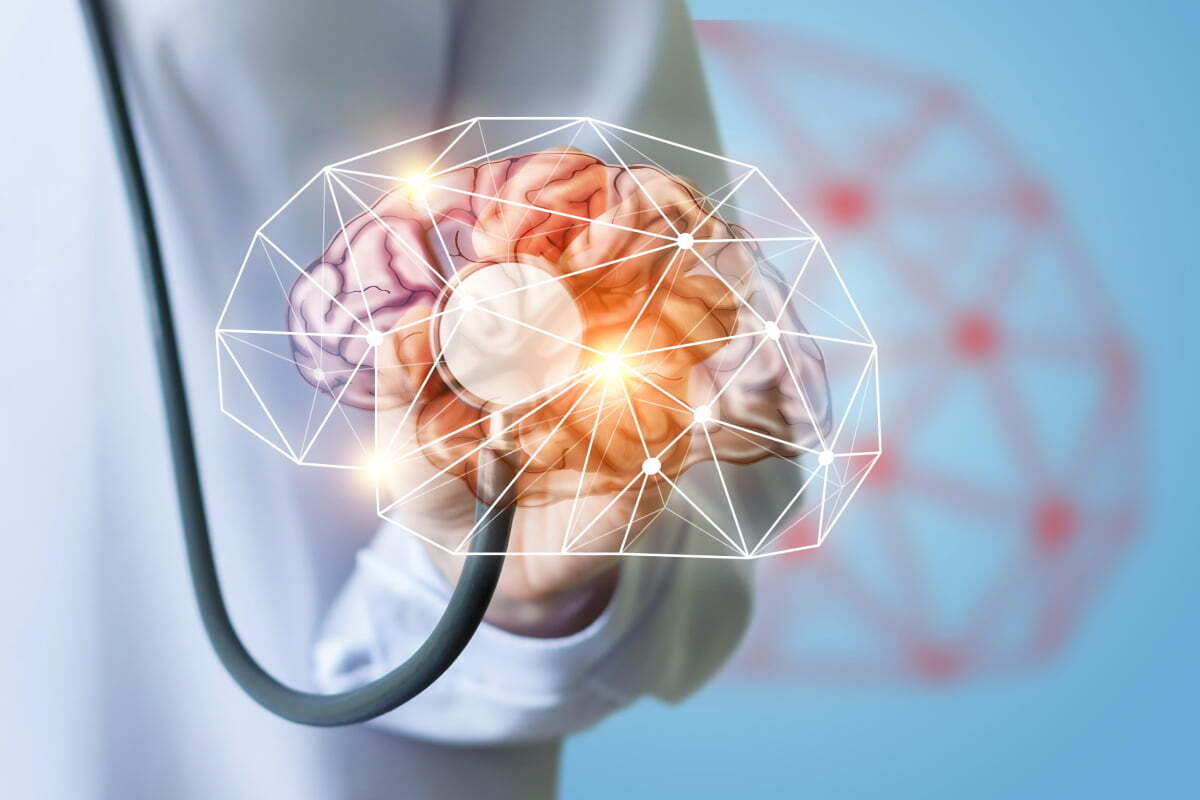
Rare neurological conditions affect a small portion of the population but have a significant impact on those who live with them. Approximately 40% of rare diseases are neurological or neurodevelopmental disorders. These conditions range from genetic disorders like Rett syndrome to autoimmune diseases such as Neuromyelitis Optica. Symptoms can vary widely, including muscle weakness, cognitive decline, and seizures. Diagnosing these conditions often requires specialized tests and expert consultations. While treatments are limited, ongoing research aims to improve understanding and develop new therapies. Raising awareness about these conditions is crucial for better diagnosis, treatment, and support for affected individuals.
Key Takeaways:
- Rare neurological conditions, like Rett syndrome and Kleine-Levin syndrome, impact a small segment of the population and can have severe effects on individuals' lives. Understanding and awareness are crucial for better treatment and support.
- Research and awareness, such as Rare Disease Day, play a vital role in understanding and treating rare neurological conditions. More knowledge and support are needed to improve the lives of those affected.
Understanding Rare Neurological Conditions
Rare neurological conditions affect the nervous system and can have profound impacts on individuals' lives. These disorders are often less understood and harder to treat than more common conditions. Let's explore some key facts about these rare conditions.
-
Prevalence of Rare Neurological Disorders
About 40% of rare diseases are neurological or neurodevelopmental, impacting a small segment of the population. -
Examples of Rare Neurological Disorders
Notable examples include Rett syndrome and Kleine-Levin syndrome, each with unique symptoms and challenges.
Rett Syndrome: A Closer Look
Rett syndrome is a genetic disorder primarily affecting girls. It causes severe impairments and developmental delays.
-
Rett Syndrome
Rett syndrome is caused by mutations in the MECP2 gene, leading to severe impairments in speech, walking, eating, and breathing. -
Symptoms of Rett Syndrome
Symptoms often begin with missed milestones or regression around 6-18 months, including repetitive hand movements.
Kleine-Levin Syndrome: The Sleeping Beauty Disorder
Kleine-Levin syndrome is a rare sleep disorder that can severely disrupt daily life.
-
Kleine-Levin Syndrome
Characterized by hypersomnolence, compulsive hyperphagia, and behavioral changes, it primarily affects adolescent males. -
Prevalence of Kleine-Levin Syndrome
It affects an estimated 1-3 individuals per million, making it extremely rare.
Neurodegenerative Disorders
Neurodegenerative disorders progressively damage the nervous system, leading to severe disability and often death.
-
Amyotrophic Lateral Sclerosis (ALS)
ALS, or Lou Gehrig's disease, affects nerve cells in the brain and spinal cord, leading to muscle weakness and paralysis. -
Prevalence of ALS
ALS affects approximately 2 in 100,000 people worldwide, with no cure currently available. -
Multiple Sclerosis (MS)
MS is an autoimmune disease that disrupts communication between nerve cells, causing a range of symptoms from vision problems to cognitive issues. -
Prevalence of MS
MS affects about 2.8 million people globally, with various subtypes and treatment options.
Genetic Neurological Disorders
Genetic disorders can cause a range of neurological symptoms, often requiring lifelong management.
-
Charcot-Marie-Tooth Disease (CMT)
CMT affects peripheral nerves, leading to muscle weakness and atrophy, particularly in the lower legs and feet. -
Subtypes of CMT
There are six main subtypes of CMT, each with different genetic causes and symptoms.
Common Neurodegenerative Diseases
Some neurodegenerative diseases are more common but still pose significant challenges.
-
Alzheimer's Disease
Alzheimer's is the most common form of dementia, characterized by memory loss and cognitive decline. -
Prevalence of Alzheimer's
It affects approximately 5.3 million people in the United States alone. -
Parkinson's Disease
Parkinson's affects movement, balance, and coordination, with symptoms like tremors and stiffness. -
Prevalence of Parkinson's
About 0.6 million people in the United States are affected by Parkinson's disease.
Rare Movement Disorders
Movement disorders can severely impact daily life, often requiring specialized treatment.
-
Multiple System Atrophy (MSA)
MSA affects movement, balance, and autonomic functions, with no cure currently available. -
Subtypes of MSA
There are two main subtypes: Parkinsonian and cerebellar.
Autoimmune Neurological Disorders
Autoimmune disorders can attack the nervous system, leading to a range of symptoms.
-
Myasthenia Gravis
This disorder affects the neuromuscular junction, causing muscle weakness and fatigue. -
Treatment of Myasthenia Gravis
Treatment can include medications and, in severe cases, surgical removal of the thymus gland.
Seizure Disorders
Seizure disorders can vary widely in severity and impact on daily life.
-
Epilepsy
Epilepsy is characterized by recurrent seizures, affecting about 1.4 million people in the United States. -
Treatment of Epilepsy
Treatment options include medications and surgical interventions.
Vascular Neurological Disorders
Vascular disorders can cause sudden and severe neurological symptoms.
-
Stroke
Stroke occurs when blood supply to the brain is interrupted, leading to brain damage. -
Prevalence of Stroke
Approximately 7.8 million people in the United States are affected by stroke each year.
Traumatic Neurological Injuries
Trauma can cause significant and lasting damage to the nervous system.
-
Traumatic Brain Injury (TBI)
TBI results from a blow or jolt to the head, leading to a range of symptoms from headaches to cognitive impairments. -
Prevalence of TBI
About 2.1 million people in the United States are affected by TBI each year. -
Spinal Cord Injury (SCI)
SCI can result in paralysis and loss of sensation, often due to trauma. -
Prevalence of SCI
Approximately 2.2 million people in the United States are affected by SCI.
Tumor-Related Neurological Disorders
Tumors can form on nerve tissue, causing various neurological symptoms.
-
Neurofibromatosis
This genetic disorder causes tumors to form on nerve tissue, with two main types: NF1 and NF2. -
Neurofibromatosis Type 1 (NF1)
NF1 is characterized by café-au-lait spots, neurofibromas, and optic gliomas. -
Neurofibromatosis Type 2 (NF2)
NF2 is characterized by vestibular schwannomas and meningiomas.
Rare Genetic Disorders
Some rare genetic disorders cause unique neurological symptoms.
-
Neurodegeneration with Brain Iron Accumulation (NBIA)
NBIA is characterized by iron accumulation in the brain, leading to motor symptoms and cognitive decline. -
Subtypes of NBIA
There are several subtypes, each with different genetic causes and treatment options.
Autoimmune and Infectious Neurological Disorders
Autoimmune and infectious diseases can also impact the nervous system.
-
Neuromyelitis Optica (NMO)
NMO affects the optic nerve and spinal cord, causing vision loss and muscle weakness. -
Treatment of NMO
Treatment involves immunosuppressive medications and plasma exchange. -
Neurological Complications of AIDS
AIDS can cause complications like HIV-associated dementia and peripheral neuropathy. -
Treatment of AIDS-Related Neurological Complications
Treatment involves antiretroviral therapy and symptom management. -
Neurological Consequences of Cytomegalovirus Infection
This infection can cause encephalitis, meningitis, and myelitis. -
Treatment of Cytomegalovirus Infection
Treatment involves antiviral medications and symptom management.
Research and Awareness
Research and awareness are crucial for understanding and treating rare neurological conditions.
- Rare Disease Day
Celebrated on February 28, Rare Disease Day raises awareness about rare diseases globally.
Final Thoughts on Rare Neurological Conditions
Rare neurological conditions impact countless lives, often with limited understanding and treatment options. These disorders, like Rett syndrome and Kleine-Levin syndrome, present unique challenges. Rett syndrome affects young girls, causing severe impairments, while Kleine-Levin syndrome disrupts sleep and behavior, primarily in adolescent boys. Other conditions like ALS, MS, and CMT further highlight the diverse nature of these disorders.
Ongoing research is crucial for better understanding and managing these conditions. Advances in genetics and personalized medicine offer hope for more effective treatments. Awareness days, like Rare Disease Day, play a vital role in highlighting these conditions and fostering support.
Understanding the complexity of rare neurological disorders is key to improving patient care and finding potential cures. By recognizing their impact, we can work towards better management and support for those affected.
Frequently Asked Questions
Was this page helpful?
Our commitment to delivering trustworthy and engaging content is at the heart of what we do. Each fact on our site is contributed by real users like you, bringing a wealth of diverse insights and information. To ensure the highest standards of accuracy and reliability, our dedicated editors meticulously review each submission. This process guarantees that the facts we share are not only fascinating but also credible. Trust in our commitment to quality and authenticity as you explore and learn with us.


